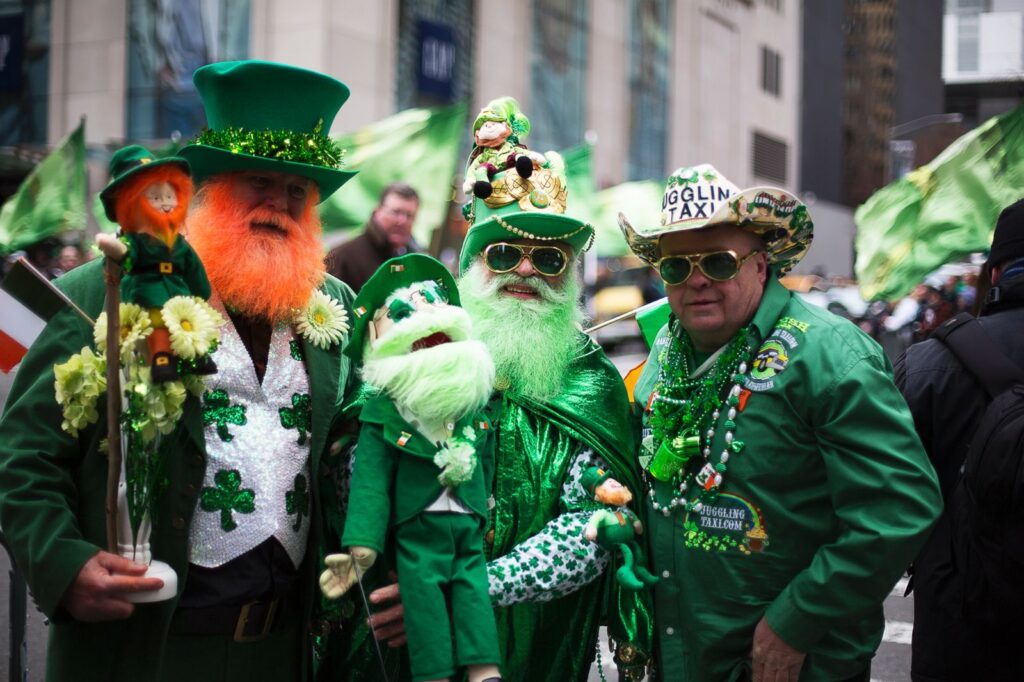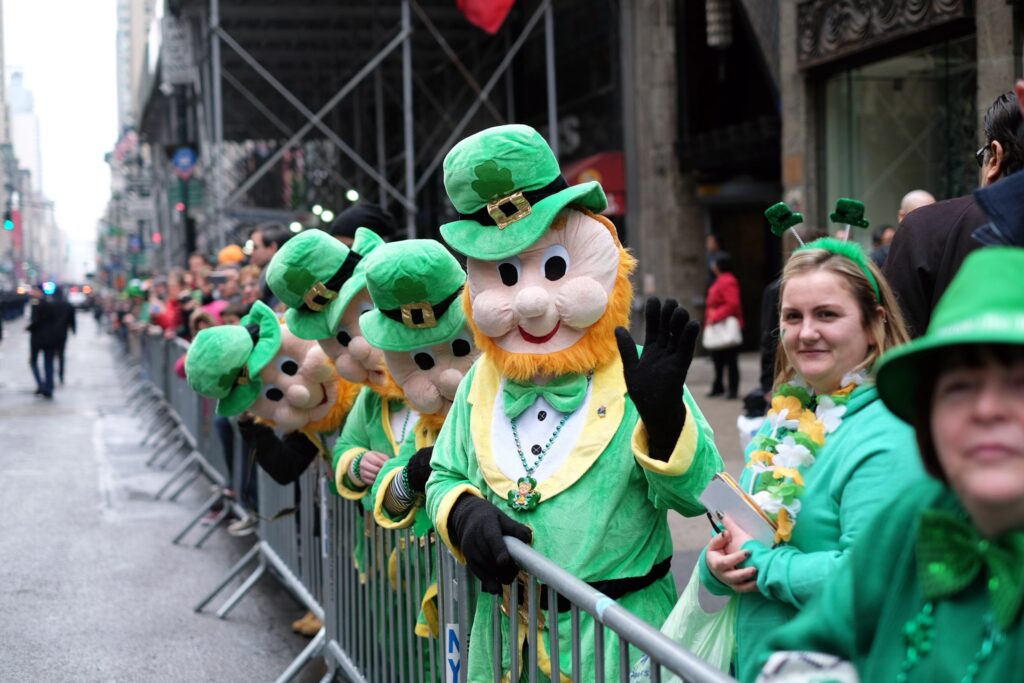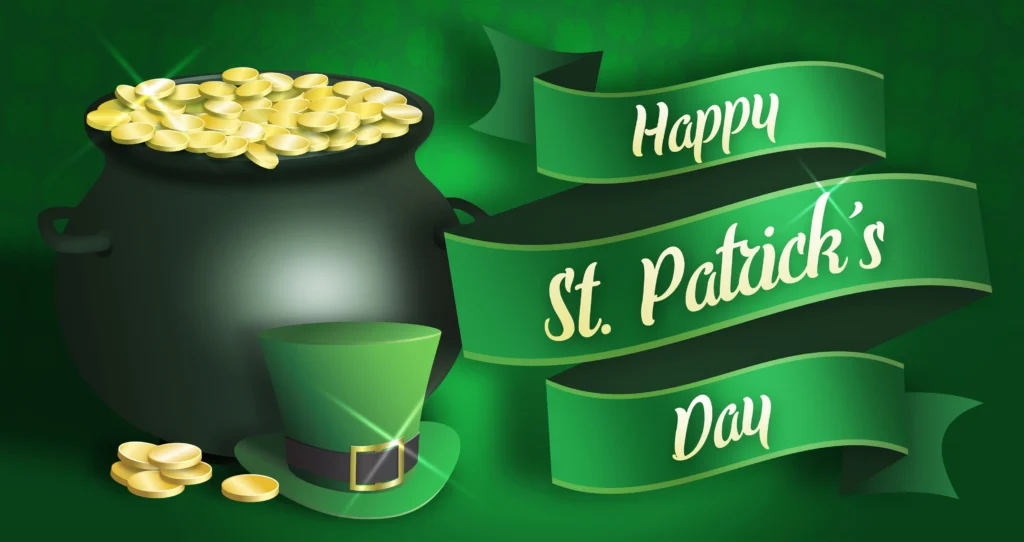The Untold Story of the Origin of St. Patrick’s Day
The Untold Story of the Origin of St. Patrick’s Day reveals a rich tapestry woven through centuries of cultural evolution, religious significance, and the forging of identity. While many today may envision parades filled with green-clad revelers or pint glasses overflowing with dyed beverages, the true essence of this day goes far beyond these modern interpretations. This article will take a deep dive into the complex roots of this vibrant celebration, exploring the life of its namesake, Saint Patrick, the historical context surrounding the holiday’s inception, and the intricate ways it has transformed through time to become what it is today.
From Roman Britain to Irish Apostle: The Life of Patrick
St. Patrick’s Day cannot be understood without a close examination of the man who inspired its observance—Saint Patrick himself. Born around 385 AD in Roman Britain, Patrick was thrust into a world that would ultimately mold his destiny as a missionary and herald of Christianity in Ireland. His early years were characterized by privilege and education, yet his life took a dramatic turn when he was captured at the tender age of sixteen.
Captivity and Transformation
Patrick’s abduction by Irish raiders marked the onset of six long years of servitude. It was during these harrowing times that he began to form an indelible bond with the Irish landscape and its people. Forced to tend sheep in isolation, young Patrick turned to faith for solace. He wrote later about experiencing profound visions and spiritual awakenings, which not only heightened his sense of self but also the understanding of his purpose.
The trials he endured shaped him into a resilient individual, capable of compassion, empathy, and leadership. His experiences laid the groundwork for the future Christian community he would eventually help establish in Ireland. Contrary to the misconceptions surrounding him as merely a mythical figure associated with folklore, Patrick’s life embodies the struggle and eventual triumph over adversity.
The Missionary Journey
Upon escaping back to Britain, Patrick’s calling became undeniable. He pursued extensive religious training with unwavering determination, ultimately becoming ordained as a bishop. His journey back to Ireland was not one made out of vengeance or anger towards those who had enslaved him. Instead, it was fueled by a genuine desire to share the message of Christianity and foster connections with the very people who once held him captive.
His innovative approach led him to integrate existing Irish traditions with Christian teachings. For instance, by using the shamrock to explain the concept of the Holy Trinity, Patrick demonstrated a profound understanding of cultural pedagogy. This blending of beliefs allowed for a smoother transition for the Irish people, displaying extraordinary sensitivity and adaptability.
Legacy and Reverence
Over the years, Patrick’s endeavors bore fruit as Christianity slowly took root in a land previously dominated by paganism. His legacy grew beyond mere historical accounts; he became a symbol of national pride and resilience. The evolution from a humble missionary to the patron saint of Ireland reflects a broader narrative of identity reclamation and spiritual awakening. Patrick’s story stands as a testament to how one individual’s faith can transcend personal suffering and evolve into a collective heritage.
The Evolution of a Religious Holiday: From Local Devotion to Global Celebration
Initially, St. Patrick’s Day was a solemn occasion centered on prayer and reflection within localized communities in Ireland. The holiday’s origins were steeped in reverence for the contributions of St. Patrick to the nation’s spiritual landscape. However, as time passed, the day evolved, reflecting changing social contexts and cultural dynamics.
Early Observances and Religious Significance
For centuries, March 17th was primarily recognized as a religious feast day. It provided opportunities for people to come together within their communities, commemorate Patrick’s life, and participate in mass. Such observances were significant in a predominantly Catholic society where religious devotion formed the bedrock of daily existence.
Many families would engage in acts of penance and prayer, pausing to reflect on Patrick’s teachings while fostering unity among the faithful. Despite its deeply rooted spiritual origins, St. Patrick’s Day remained largely confined to these religious observances until various sociopolitical factors began to shift its narrative.
The Emergence of National Identity
The rise of nationalism in the 19th century played a pivotal role in altering the perception of St. Patrick’s Day. Amidst political turmoil and oppression, the holiday began to symbolize resistance against British rule, embodying the spirit of independence. This newfound meaning resonated deeply with the Irish populace, instilling pride in their heritage and history.
As the harsh realities of colonial rule weighed heavily on the Irish, St. Patrick emerged not just as a saint but as a beacon of hope and national identity. The act of celebrating St. Patrick’s Day became intertwined with expressions of solidarity, emphasizing unity amidst struggle. During such tumultuous times, the holiday transitioned from being purely religious to encompassing broader themes of cultural pride and national consciousness.
The Globalization of Celebrations
The 19th century was a turning point for St. Patrick’s Day celebrations, particularly due to the Irish diaspora caused by famine and emigration. As millions fled to North America and other regions seeking refuge, they carried their customs and traditions along with them. In these new lands, the celebration of St. Patrick’s Day flourished, becoming a vibrant expression of cultural identity.
Irish immigrants sought to retain their heritage amid the challenges of assimilation. Together, they organized parades and gatherings, growing St. Patrick’s Day into an event that extended beyond religious boundaries. These celebrations provided a sense of belonging and reaffirmed their cultural roots, allowing for a communal expression of Irish pride.
The Secularization and Commercialization of a Tradition
As St. Patrick’s Day broadened its appeal, the holiday began a gradual process of secularization. This transformation shifted the focus from its religious origins toward cultural celebration, all while giving rise to commercial interests that capitalized on its popularity.
The Cultural Shift
The secularization of St. Patrick’s Day coincided with the increasing diversity of communities participating in the celebrations. Initially rooted in Irish Catholicism, the holiday attracted individuals from various backgrounds who embraced the festive spirit without necessarily subscribing to its religious connotations. With this inclusivity came a renewed emphasis on the cultural aspects of the holiday.
Adornments of green clothing and decorations became synonymous with the festivities. The shamrock, once a sacred symbol tied to St. Patrick, morphed into a broader representation of joyous celebration. This cultural shift contributed to the emergence of jubilant festivities that focused on music, dance, and community rather than solemn remembrance.
Commercialization and Its Implications
With the rising popularity of St. Patrick’s Day came an avalanche of commercialization. Businesses promptly recognized the potential for profit, rolling out themed promotions, merchandise, and events tailored to attract celebrants. While this commercialization undoubtedly contributed to the visibility of the holiday, it raised questions regarding authenticity and respect for its origins.
Critics argue that the saturated market has diluted the essence of St. Patrick’s Day, reducing it to a caricature of leprechauns, shamrocks, and excessive alcohol consumption. Such representations can obscure the deeper meanings and historical complexities of the holiday, potentially leading to a superficial understanding of Irish culture. To counter this trend, initiatives promoting responsible celebrations have emerged, urging participants to honor the holiday’s roots while enjoying the festivities.
Navigating the Complex Legacy
The commercialization of St. Patrick’s Day has created a complex legacy marked by both appreciation and misinterpretation. Acknowledging this duality encourages us to engage critically with the holiday, recognizing the balance between celebration and cultural integrity.
Additionally, as we navigate this evolving landscape, it’s essential to confront the distorted portrayals of Irish identity that often dominate mainstream narratives. By delving deeper into the rich heritage of Ireland, we can cultivate a more nuanced understanding of the holiday, celebrating its multifaceted nature while respecting its historical significance.
Navigating a Complex Legacy: The Challenges and Controversies of St. Patrick’s Day
While St. Patrick’s Day brings joy and celebration, it also presents a myriad of challenges and controversies that stem from its global adaptation. The focus on irresponsible portrayals and the oversimplification of Irish culture complicates the legacy of the holiday, sparking discussions about authenticity and representation.
Distorted Representations of Irish Culture
One of the most pressing issues surrounding St. Patrick’s Day is the tendency towards caricatured representations of Irish culture. The emphasis on leprechauns, pots of gold, and drunken revelry reduces the complexity of a rich and diverse heritage. These simplifications overshadow the vast array of contributions made by Irish artists, poets, musicians, and thinkers throughout history.
Such representations can alienate those within the Irish community who see the holiday as a time to reflect upon their culture with dignity and respect. While playful celebrations have their place, an authentic appreciation of Irish heritage requires acknowledging its depth, nuances, and historical context.
Historical Context and Colonial Narratives
The relationship between Ireland and Britain significantly influences perceptions of St. Patrick’s Day. For many, the holiday serves as a reminder of the struggles faced by the Irish people in their pursuit of independence and identity. The tensions between colonizer and colonized must not be ignored, as they contribute to the complex legacy surrounding the celebration.
In many ways, St. Patrick’s Day embodies the dichotomy of joy and sorrow—the vibrant celebrations stand in contrast to historical injustices. Addressing this tension necessitates open dialogues about the implications of the holiday, encouraging greater understanding of its socio-political dimensions.
The Debate Over Alcohol Consumption
Another contentious aspect of St. Patrick’s Day revolves around alcohol consumption. While festivities often entail drinking and merrymaking, there are growing concerns regarding the excesses that accompany such celebrations. Instances of public disorder and negative stereotypes attributing drunkenness to Irish culture have sparked debates about the appropriateness of certain behaviors during this holiday.
Efforts to promote responsible drinking practices highlight the importance of honoring the holiday’s cultural significance while ensuring that celebrations remain inclusive and respectful. By cultivating a sense of mindfulness, we can foster a positive atmosphere that celebrates heritage without perpetuating harmful stereotypes.
Reclaiming the True Spirit of St. Patrick’s Day
As we navigate the complexities surrounding St. Patrick’s Day, it becomes clear that reclaiming its true spirit is essential for future generations. Understanding the holiday’s historical and cultural layers allows us to engage in a celebration that honors its origins while embracing contemporary interpretations.
Acknowledge the Historical Context
Recognizing the evolution of St. Patrick’s Day—from a local religious observance to a global celebration—provides valuable insight into its significance. By tracing the roots of the holiday, we can appreciate the transformative journey it has taken, including the socio-political factors that shaped its identity.
Engaging with this historical context fosters a deeper connection to the festivities, allowing participants to celebrate with intention. Acknowledgment of the past empowers us to carry forward the legacies of those who came before us, honoring their struggles and achievements.
Foster a Deeper Appreciation for Irish Culture
To reclaim the spirit of St. Patrick’s Day, we must strive to explore and embrace the full range of Irish cultural expressions. Beyond the surface-level representations, there exists a wealth of literature, music, art, and history waiting to be discovered.
Engaging with these artistic and cultural offerings enriches our understanding of Irish heritage, allowing us to celebrate with authenticity. By elevating the voices of contemporary Irish creators, we create space for dialogue and exploration that transcends stereotypes.
Promote Responsible and Respectful Celebrations
Encouraging responsible and respectful celebrations is vital for preserving the integrity of St. Patrick’s Day. Communities must prioritize inclusivity and mindfulness, ensuring that festivities resonate with joy rather than excess or disrespect.
Initiatives that promote awareness surrounding alcohol consumption and cultural appreciation allow participants to engage in celebrations that honor the holiday’s true spirit. Encouraging thoughtful reflection enables individuals to partake in meaningful rituals that celebrate both identity and heritage.
Celebrate the Diversity of the Irish Diaspora
Finally, the richness of the Irish diaspora must be acknowledged and celebrated. The experiences and perspectives of Irish communities around the world contribute to a vibrant tapestry that enhances our understanding of St. Patrick’s Day.
By embracing the diversity within the Irish community, we can foster an environment that celebrates unique narratives, acknowledges differing experiences, and recognizes the shared bonds forged through cultural heritage.
St. Patrick’s Day is a testament to the enduring power of culture, faith, and the human spirit. From its humble beginnings as a religious commemoration of a missionary’s life, it has evolved into a global celebration of Irish heritage with both profound cultural significance and occasionally questionable interpretations. Understanding its rich history and acknowledging its complexities is crucial for ensuring its continued celebration in a manner that is respectful, authentic, and truly representative of the spirit of Saint Patrick and the cultural legacy of the Irish people. As we continue to navigate this holiday, let us embrace its intricate layers and commit to celebrating with intention and reverence, honoring both the memory of Saint Patrick and the vibrant culture he represents.
>>> Read more: Romantic Movies to Watch Together on Valentine’s Day



